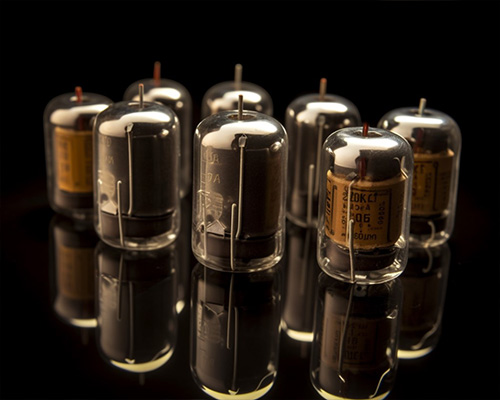Why Do Electrolytic Capacitors Explode?
Introduction:
Understanding the intricacies of electrolytic capacitors is pivotal for engineers and enthusiasts, especially when occasional explosions pose challenges in electronic systems. This comprehensive exploration delves into the composition of electrolytic capacitors, their various types, and the nuanced factors contributing to their explosive nature. As a distinguished company in advanced materials, Stanford Advanced Materials brings detailed insights into the science behind capacitor explosions, aiming to empower professionals in the field and enhance the safety and reliability of electronic systems.
Exploring Electrolytic Capacitors:
An electrolytic capacitor, a cornerstone of electronic components, features metal foil serving as the positive electrode, typically aluminum or tantalum. The oxide film, closely adhering to the metal, acts as the dielectric. The cathode, crucial for the capacitor's operation, comprises conductive material, electrolyte (liquid or solid), and additional components. The nomenclature 'electrolytic' reflects the essential role of the electrolyte in the cathode's structure.

Types of Electrolytic Capacitors:
- Tantalum Electrolytic Capacitor: Predominantly constituted of sintered solid, foil winding solid, and sintering liquid, with non-metallic sealed resin being the primary material.
- Aluminum Electrolytic Capacitor: Distinguished into lead type, horn type, bolted type, and solid type, each tailored for specific applications, showcasing the versatility of this capacitor category.
Reasons Behind Electrolytic Capacitor Explosions:
Poor Manufacturing Process:
Internal component breakdown often results from subpar manufacturing processes, underscoring the need for precision in capacitor production. The tiniest error can lead to catastrophic consequences, emphasizing the importance of quality control throughout the manufacturing chain.
Shell Insulation Damage:
Uneven edges, burrs, or severe bending during manufacturing may compromise insulation, leading to corona generation, oil breakdown, case expansion, and oil leakage. Attention to detail in the manufacturing process is paramount to ensure the capacitor's structural integrity.
Sealing Issues and Oil Leakage:
Insufficient sealing of the casing can reduce insulation resistance, leading to oil leakage. This can cause extreme shell direction discharge or component breakdown. Meticulous assembly and stringent quality control are essential to prevent sealing issues, ensuring the capacitor's resilience in various operational conditions.
Internal Dissociation:
Corona, breakdown discharge, and severe dissociation can reduce the starting free voltage of the capacitor, accelerating the aging and decomposition of insulation. This leads to gas production, increased pressure, and eventual explosion. Understanding the internal dynamics of capacitors is crucial for predicting and preventing dissociation-related explosions, necessitating ongoing research and development in materials science.
Electric Charge Explosion:
Capacitors with rated voltages must not be charged. Failure to discharge after switch disconnection can result in opposite polarity during reclosure, causing explosive reactions due to residual charges. Adhering to proper capacitor handling procedures is imperative for preventing electric charge explosions and maintaining system safety. Robust education and awareness campaigns are essential to disseminate this critical knowledge among engineers and technicians.
Other Contributing Factors:
High temperature, poor ventilation, high operating voltage, excessive voltage harmonic components, and operating overvoltage are additional factors that may contribute to capacitor explosions. System designers must consider these factors to create environments conducive to capacitor longevity. The continuous monitoring and optimization of operational conditions are key to preventing unforeseen catastrophic events.
Mitigating the Risks and Advancements:
As the demand for electronic devices continues to grow, the need for reliable and safe capacitors becomes increasingly paramount. To mitigate the risks associated with electrolytic capacitor explosions, ongoing advancements in materials science and manufacturing processes are crucial.
Materials Advancements:
Researchers are exploring novel materials for capacitor construction, aiming to enhance reliability and reduce the likelihood of explosions. Advanced polymers and composite materials are under scrutiny for their potential to provide superior insulation and structural stability.
Manufacturing Innovations:
Improvements in manufacturing processes, including precision engineering and automated quality control, are central to producing capacitors with consistent quality. Implementing cutting-edge technology ensures that each capacitor meets stringent standards, reducing the probability of internal flaws and breakdowns.
Smart Capacitor Technologies:
The integration of smart technologies, such as sensors and monitoring systems, enables real-time tracking of a capacitor's health and performance. Early detection of anomalies allows for proactive maintenance, preventing potential issues before they escalate into hazardous situations.
Educational Initiatives:
Educational initiatives within the electronics industry are essential to disseminate knowledge about proper capacitor handling, maintenance, and potential risks. Workshops, seminars, and online resources can contribute to a more informed and safety-conscious engineering community.
Conclusion:
In conclusion, a profound understanding of the reasons behind electrolytic capacitor explosions is vital for maintaining safety and reliability in electronic systems. Stanford Advanced Materials, with its commitment to advancing materials science, provides invaluable insights into the intricate world of capacitors. By comprehending the nuances of capacitor construction and considering potential pitfalls in manufacturing and usage, engineers and enthusiasts can mitigate the risk of explosions, ensuring the longevity of electronic devices.
As technology advances, ongoing research and development efforts play a crucial role in minimizing the risks associated with capacitor failures. Materials innovations, manufacturing advancements, and the integration of smart technologies collectively contribute to a safer electronic landscape. By staying informed, implementing best practices, and embracing technological progress, the electronics industry can foster an environment where capacitor explosions become increasingly rare, paving the way for a more reliable and secure future.









